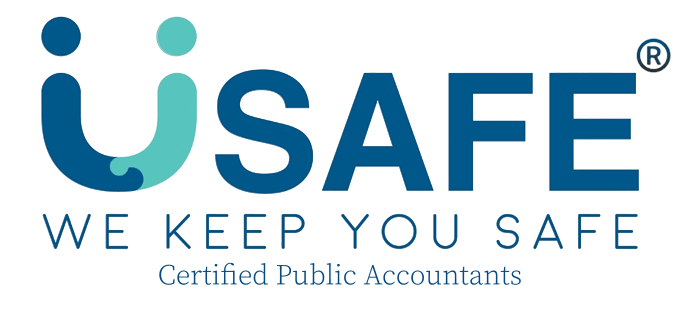IFRS 7 Financial Instruments: Disclosures – Enhancing Transparency in Financial Risks
1️⃣ Introduction: Understanding IFRS 7 Financial Instruments Disclosures
IFRS 7 Financial Instruments Disclosures sets out the disclosure requirements for financial instruments, including classification, measurement, and risk exposure.
In Singapore, companies often deal with trade receivables, loans, derivatives, and cash balances. Therefore, IFRS 7 Financial Instruments Disclosures helps entities communicate how these instruments affect liquidity, credit risk, and market risk, making financial statements clearer and more reliable.
2️⃣ Purpose and Scope
IFRS 7 applies to all financial instruments, except those excluded by other standards (such as interests in subsidiaries under IFRS 10).
It requires disclosures that allow users to understand:
-
The significance of financial instruments for financial position and performance, and
-
The nature and extent of risks arising from those instruments.
As a result, investors gain a complete view of the company’s financial risk profile.
3️⃣ Key Disclosure Categories
IFRS 7 Financial Instruments Disclosures requires three main types of disclosures:
(a) Carrying Amounts and Classifications
Companies must explain how financial assets and liabilities are classified under IFRS 9 (e.g., amortised cost, fair value through OCI, or fair value through profit or loss).
(b) Income, Expense, Gains, and Losses
Entities must disclose:
-
Interest income and expense
-
Impairment losses
-
Fair value gains or losses
-
Fee income and expense
In addition, companies should explain how these amounts affect profit or loss.
(c) Accounting Policies
Companies must describe measurement bases, derecognition methods, and how they determine expected credit losses (ECL).
4️⃣ Risk Disclosures
Risk disclosure is the core of IFRS 7 Financial Instruments Disclosures.
Companies must explain credit risk, liquidity risk, and market risk, along with the methods used to manage them.
Credit Risk
Includes information about:
-
Maximum exposure to credit loss
-
Ageing of trade receivables
-
Collateral and credit enhancements
-
ECL methodology
Liquidity Risk
Companies must show:
-
Maturity analyses for financial liabilities
-
Cash-flow obligations
-
Policies to manage liquidity shortages
Market Risk
Covers:
-
Interest-rate sensitivity
-
Foreign-currency sensitivity
-
Price risk for investments
Therefore, readers can understand how financial risks affect performance.
5️⃣ Fair Value Disclosures
For financial instruments measured at fair value, IFRS 7 requires:
-
Fair value hierarchy (Level 1, Level 2, Level 3)
-
Valuation techniques and inputs
-
Reconciliation of Level 3 movements
These disclosures strengthen transparency for complex instruments.
6️⃣ Offsetting Disclosures (IFRS 7 + IAS 32)
If the company offsets financial assets and liabilities, it must disclose:
-
Gross amounts
-
Net amounts
-
Enforceable netting arrangements
As a result, users can evaluate the true exposure after offsetting.
7️⃣ Example: IFRS 7 in Practice
Scenario:
uSafe Accounting Pte. Ltd. holds:
-
SGD 400,000 trade receivables
-
SGD 200,000 bank loan
-
USD cash balances
-
A Level 2 fair-value investment
Under IFRS 7 Financial Instruments Disclosures, uSafe must present:
-
Ageing of receivables and ECL assumptions
-
Loan maturity table
-
FX sensitivity analysis for USD balances
-
Valuation method for Level 2 instruments
Consequently, stakeholders understand both the company’s risks and how they are managed.
8️⃣ Common Errors
-
Incomplete ECL disclosures (missing assumptions or sensitivity).
-
Omitting maturity analysis for liabilities.
-
Failing to explain Level 3 valuation assumptions.
-
Combining market-risk disclosures without proper breakdown.
Avoiding these issues strengthens clarity and audit readiness.
9️⃣ Best Practices
To comply with IFRS 7 effectively:
✅ Maintain a risk-register for credit, liquidity, and market risks.
✅ Update ECL models with current economic data.
✅ Reconcile all fair-value movements monthly.
✅ Use consistent charts and tables for risk disclosures.
In addition, use transition words like as a result, therefore, and in addition to improve narrative clarity.
Conclusion
IFRS 7 Financial Instruments Disclosures ensures users understand how financial instruments influence risk, performance, and liquidity.
Therefore, consistent application improves transparency, aligns with ACRA expectations, and adds credibility to financial reporting for Singapore-based firms.
Disclaimer: This article is for informational purposes only and does not constitute any professional advice. Feel free to contact us to consult with our professional advisors team for personalized advice and guidance.
Sources: https://www.ifrs.org/issued-standards/list-of-standards/ifrs-7-financial-instruments-disclosures/




